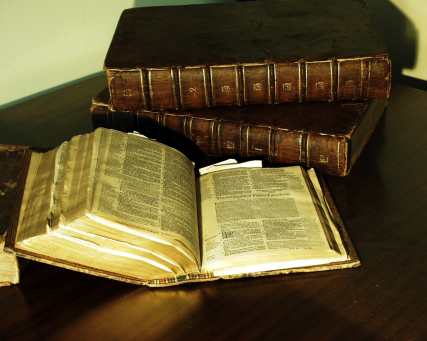 | |||||||
| Just thought this was amazing! |
As Andrew and Sam mentioned, Saint Jerome first translated the Bible from Hebrew and Greek into Latin. With the Latin Bible, those who could not read would memorize whole passages of Psalms. Nearly 1,000 years later, Wycliffe, who believed the Bible included truths that should guide both the political and religious governments, translated the New Testament into English. However, though this New Testament was written shortly before the invention of the printing press, it was not printed until 1850! This was because English bibles were seen as a symbol of heresy. So, Wycliffe's New Testament existed in manuscript form for quite some time.
 |
| The Wycliffe Bible |
 |
| The Geneva Bible |
 | |||
| King James Bible |
The Book of Mormon also was greatly affected by the invention of the printing press. I spent Thanksgiving break with my grandmother in Idaho Falls and, on Saturday, she took my cousin and I to the temple's visitors center where I unexpectedly learned a little bit more about the printing press by listening to the recording of President Monson posted below.
Did you know that people could purchase Joseph Smith's revised version of the King James Bible at the same time that the Book of Mormon was being printed? I thought that was pretty amazing.
Printing has had such a great influence on people throughout the world, shown here through the Bible and Book of Mormon, that there may indeed be some mysterious "force" of typography! Carpe Diem, and may the force be with you!
Great post, Jenna! It's apparent that the Book of Mormon could not have been distributed before the advent of the printing press. I wonder how much pressure someone like Moroni felt, carrying around and keeping track of the only record of his people, a single record that spanned hundreds of years. Unlike the Bible, which is distributed in about 50 million copies each year, the Book of Mormon, at the time of Moroni, was just the one and only copy. I'm so thankful for the printing press!
ReplyDelete